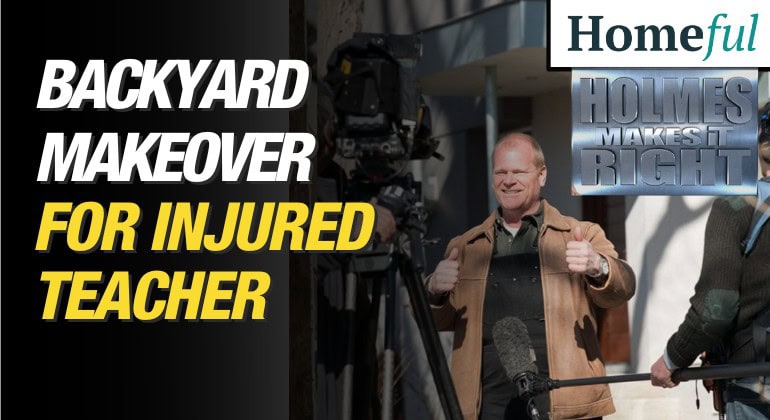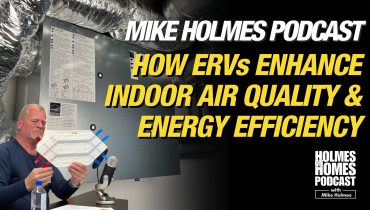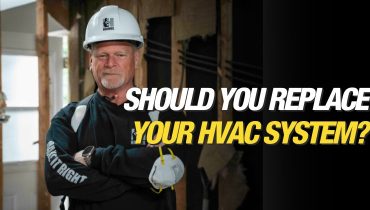When it’s time to replace your HVAC system, you have several options, each with its own benefits. Choosing the right HVAC system depends on your home’s size, climate, energy needs,...
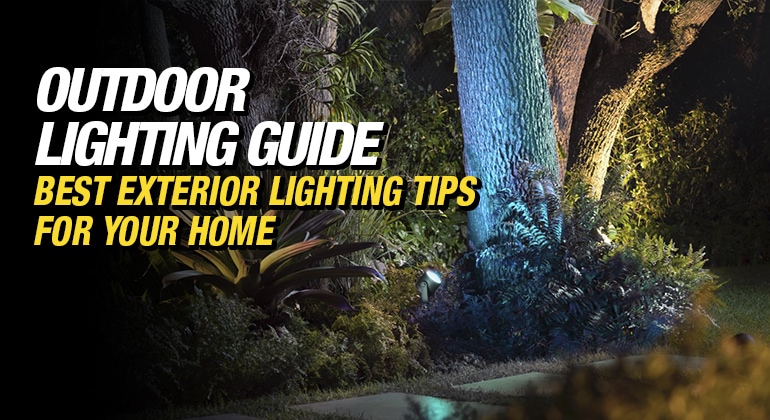
Outdoor Lighting Guide: Best Exterior Lighting Tips For Your Home
By Mike Holmes
Mike’s Advice / Home Safety & Maintenance
Monday, April 18th, 2022 @ 9:35am
Landscape Lighting Explained – How To Design Landscape Lighting
How do you select the best outdoor lights? How can you light up your landscaping? I’m going to explain how to brighten up the outside of your house with outdoor lighting.

Custom home completed by Frame Custom Homes, Holmes Approved Homes Builder
Choosing Outdoor Lighting
When it comes to picking your outdoor lighting, think about the purpose and the function. What do you want your lighting to do for your landscaping? Do you want to highlight a garden wall? Do you want it for entertainment? Or perhaps you have your landscape lighting to serve a variety of functions.

Make sure your outdoor lighting is actually suitable for outdoor use.
Here are some things your outdoor lighting can do for your home:
- Create an entertaining area in your backyard
- Use it to highlight features, such as a swing or hammock
- Make trees in your landscaping standout
- Bring attention to gardens and garden beds
- Add safety and security by having a well-lit home
- Create a clear path or entryway to your backyard, patio or home

Custom home build by Hasler Homes, Holmes Approved Homes Builder
When I am designing an outdoor space, I always create “zones”. I’m a big zone guy. This means that with lighting, you can create different ambiances depending on how you are using your space.
Your outdoor kitchen could have brighter lights, and your entertaining area may have soft lighting. Add a few string lights for décor, and you may never want to leave your backyard. A layered lighting scheme is the best approach when it comes to buying outdoor lighting.

Smart outdoor light fixture installed on one of our projects for Holmes Family Rescue.
What Type Of Lighting Is Best For Outdoors?
The most important factor to consider is that the lighting is suitable for outdoor use. You should look into low voltage when picking your landscape lighting.
If you have 120-volt 15- and 20-amp receptacles in your backyard, they MUST be protected by a Class A GFCI (Ground Fault Circuit Interrupter).
Outlets exposed to elements like rain or snow must have a cover plate, called “in use” covers and marked “Extra Duty.” This should be installed whether or not a cord is plugged into the receptacle. I always recommend you leave these installs to a professional. It’s important to do this to code.
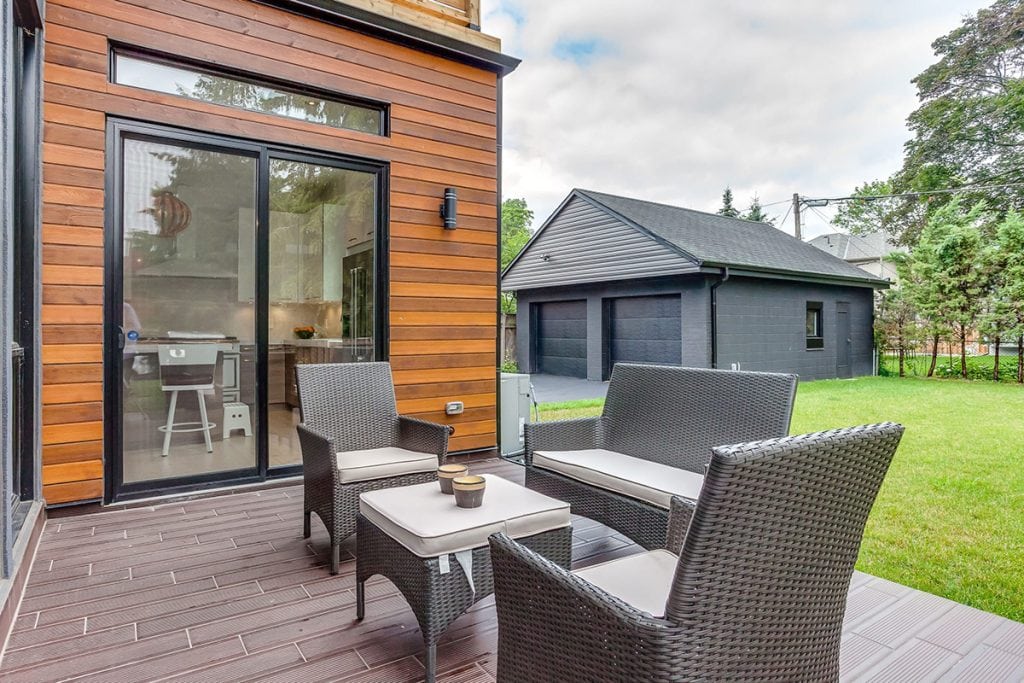
Photo from Saldan, Holmes Approved Homes Builder
Outdoor Low Voltage Lighting System
I love the look of low voltage lighting systems, and of course, they use very little electricity. You will need a special isolating transformer. This is to prevent shock and short circuits. A Licensed Electrical Contractor will need to run wiring through a trench if you want to power all the way to your back garden. Trust them to determine the depth of the trench. That would depend on location (are you crossing a driveway?).
Outdoor Smart Lighting For Your Backyard
I love the idea of smart lights for your backyard, patio, or walkways. I want my lights to turn on when I enter my driveway, and I want to be able to create different colorful moments on my deck. Remember, make sure these are designed and built for outdoor use.

Installing outdoor lights really brings everything together and makes the space useable even after sun down.
How To Install Outdoor Landscape Lighting
Landscape lighting typically relies on stepped-down power from your house. These are the components:
- A bulb, which determines the brightness and electricity usage
- A fixture housing, which protects the bulb
- Transformer, which reduces the 120-volt household current to 12 volts (safety)
Types of Outdoor House Lights
Your outdoor lighting can be task lighting, ambient lighting, or accent lighting. Task lighting will illuminate your pathways and entrances. Think about pathway lights or lighting on your deck.
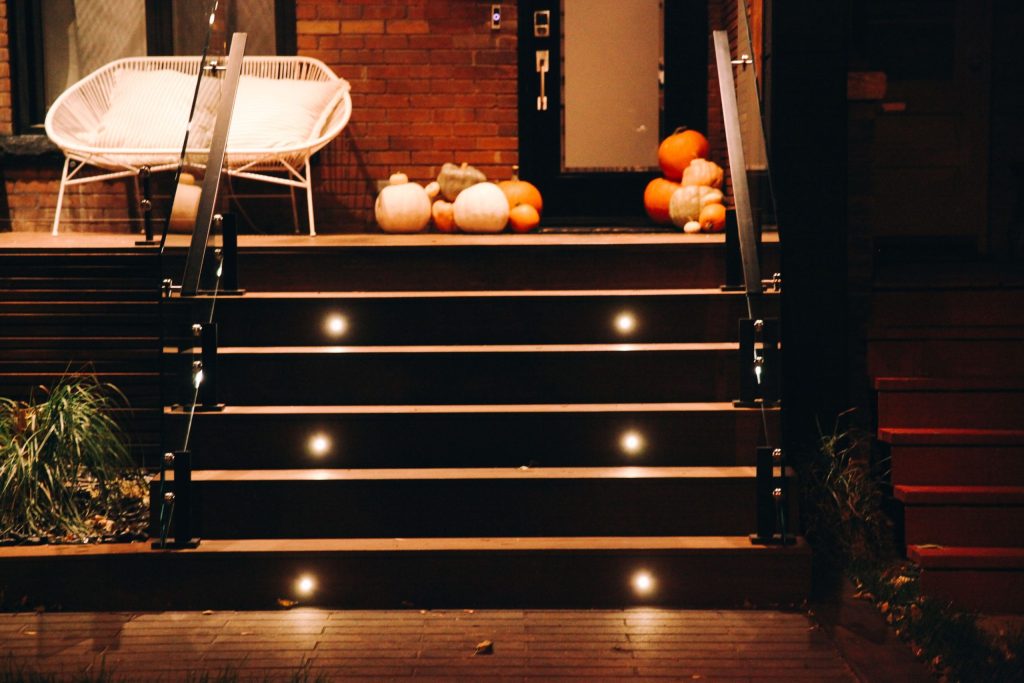
Photo from Saldan, Holmes Approved Homes Builder
Ambient lighting gives you overall lighting. Accent lighting can bring attention to specific features, such as architectural details or a garden bed.

Custom home completed by Frame Custom Homes, Holmes Approved Homes Builder
Outdoor Lighting Fixtures
Light fixtures should always be identified as outdoor lighting. Here are some common outdoor lighting fixtures.
- Downlight
- Flood Lighting
- Well
- Bullet
- Wash
- Garden
- Ceiling-Mount lighting
- Lanterns (wall or ceiling hung)
- String Lighting
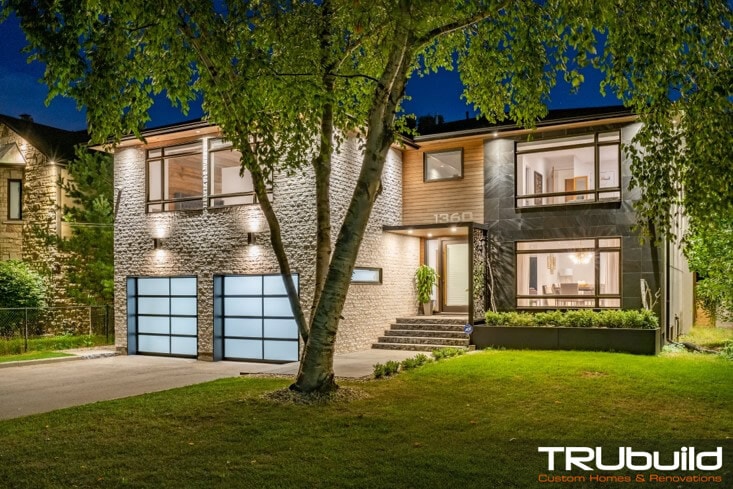
Photo from TruBuild, Holmes Approved Homes Builder
These will never go out of style. I love string lighting to add a rustic look and bring in a decorative element. You should take them down when patio season is over though if you want them to last a long time.
- Solar Lighting
- Path Lighting
- Smart Lighting
I love the idea of smart lighting, especially if you can put them on a schedule and control them with your phone. Some brands will even work with other security features, such as a security camera.
Wet Rated vs. Damp Rated Lighting
Wet Rated lighting fixtures are designed to use in areas that are directly exposed to Mother Nature. Outdoor wall lights, post lights and motion sensor lights are all wet location rated.
Damp Rated lighting fixtures are designed for use in covered areas such as patios and pergolas and any place that is not exposed directly to rain. Outdoor ceiling lights and hanging lights are damp use rated.
Electrical Requirements for Outdoor Lighting
The type of lighting you pick for your outdoors will have specific electrical requirements. While you are looking into the electrical considerations, also think about what other features you have. Do you have a ceiling fan for your cabana? It will require a specially approved junction box. Note that this is different from the box for a standard light fixture. If you have a bar fridge (like I do), you will need a dedicated outlet. All of these need to be part of your electrical plan.
If you are in Ontario, check out Electrical Safety Authority to hire the right person for this job. Always ask to see the 7-digit ECRA/ESA license number before you hire someone to do electrical work in your home.
RELATED
Electrical Safety For Outdoor Lighting
Here are some rules from the Electrical Safety Authority when it comes to electrical safety:
- All outdoor outlets should have Ground Fault Circuit Interrupters (GFCIs). This is very important if you have a permanent pool. They also need to have weatherproof covers to prevent moisture from getting in. This is important to protect the receptacle whether a cord is plugged in or not.
- Don’t place electrical equipment within 3m of a pool, spa or hot tub unless ground fault protected, but still never within 1.5m of a pool. We all know water and electricity don’t mix.
- Plug your grounded outdoor extension cord into an electrical outlet installed to meet the Ontario Electrical Safety Code. What if the outlet isn’t GFCI protected? You can buy a portable GFCI outlet adapter from your local hardware store.
- Don’t run extension cords through doors or windows (even if it is for a short time). The cord could get damaged from rubbing against the door or window edges or being pinched in the frame.
- If you need ongoing power on your deck, dock, or yard, hire a Licensed Electrical Contractor. Have the contractor install permanent outdoor wiring and outlets. Find a Licensed Electrical Contractor near you;
- Don’t staple extension cords in place or run them over nails, which can damage the cord
- Before anyone digs in your yard, contact Ontario One Call to locate existing underground wires, natural gas, and water lines.
Read more about outdoor safety from the Electrical Safety Authority here.
National Electrical Code (NEC)
The National Electrical Code has specific requirements for the installation of outdoor circuits and equipment.
- Products must be authorized by an approved testing agency for the specified application. For example, ULC in Canada.
- GFCI protection is required for all outdoor receptacles within 2.5m of grade
- Receptacles in damp locations, and exposed to weather elements must be weather-resistant. They should have a weatherproof (weathertight) cover to protect the receptacle whether or not a cord is inserted. This applies to receptacles under protective covers, such as a porch roof.
- Electrical boxes that are surface mounted must be raintight/weatherproof.
- Low-voltage light fixtures (luminaires) must be no closer than 5 feet away from the outside walls of pools, spas, or hot tubs. If GFCI-protected, it can me within 10 feet.
READ NEXT


